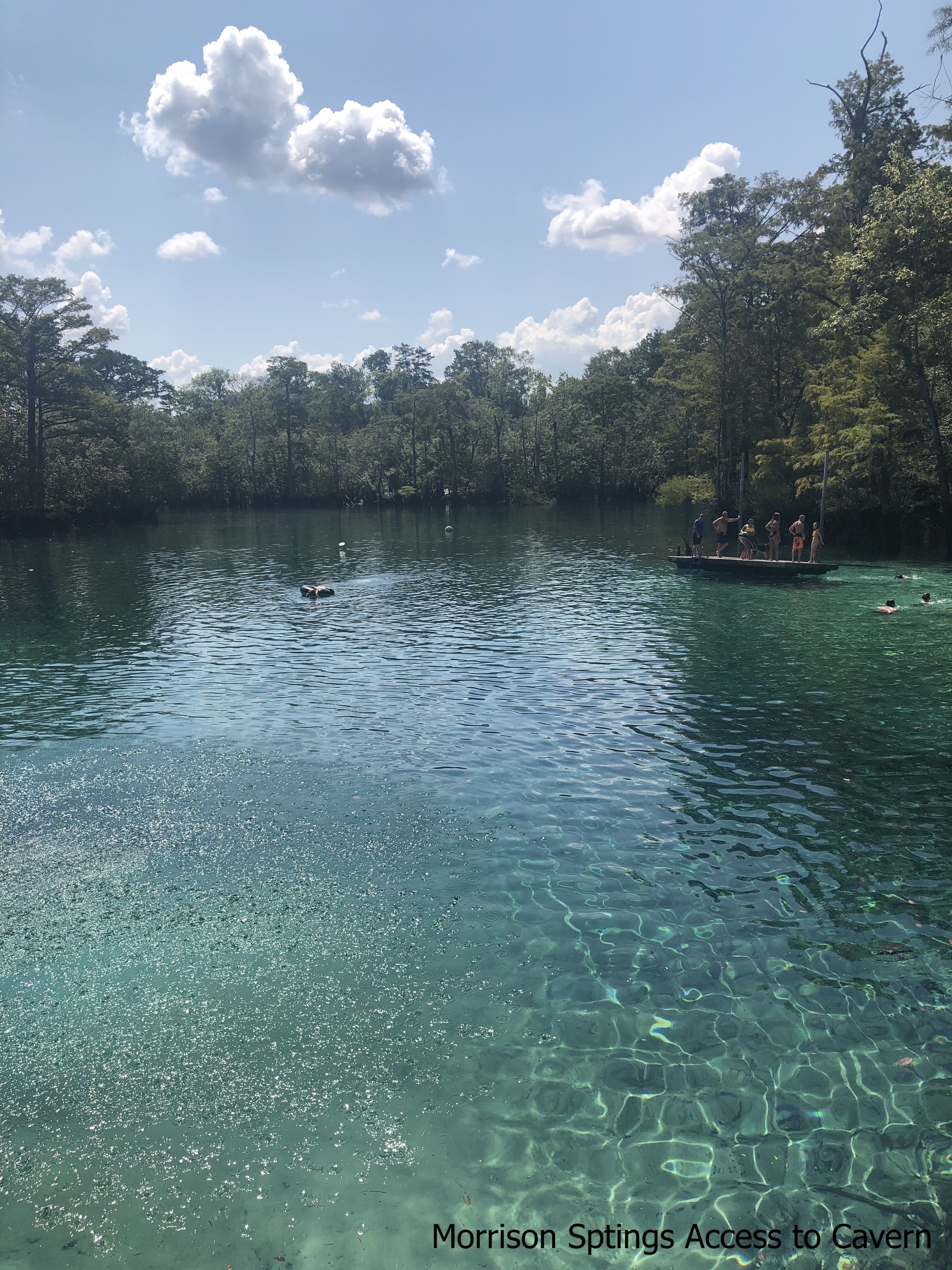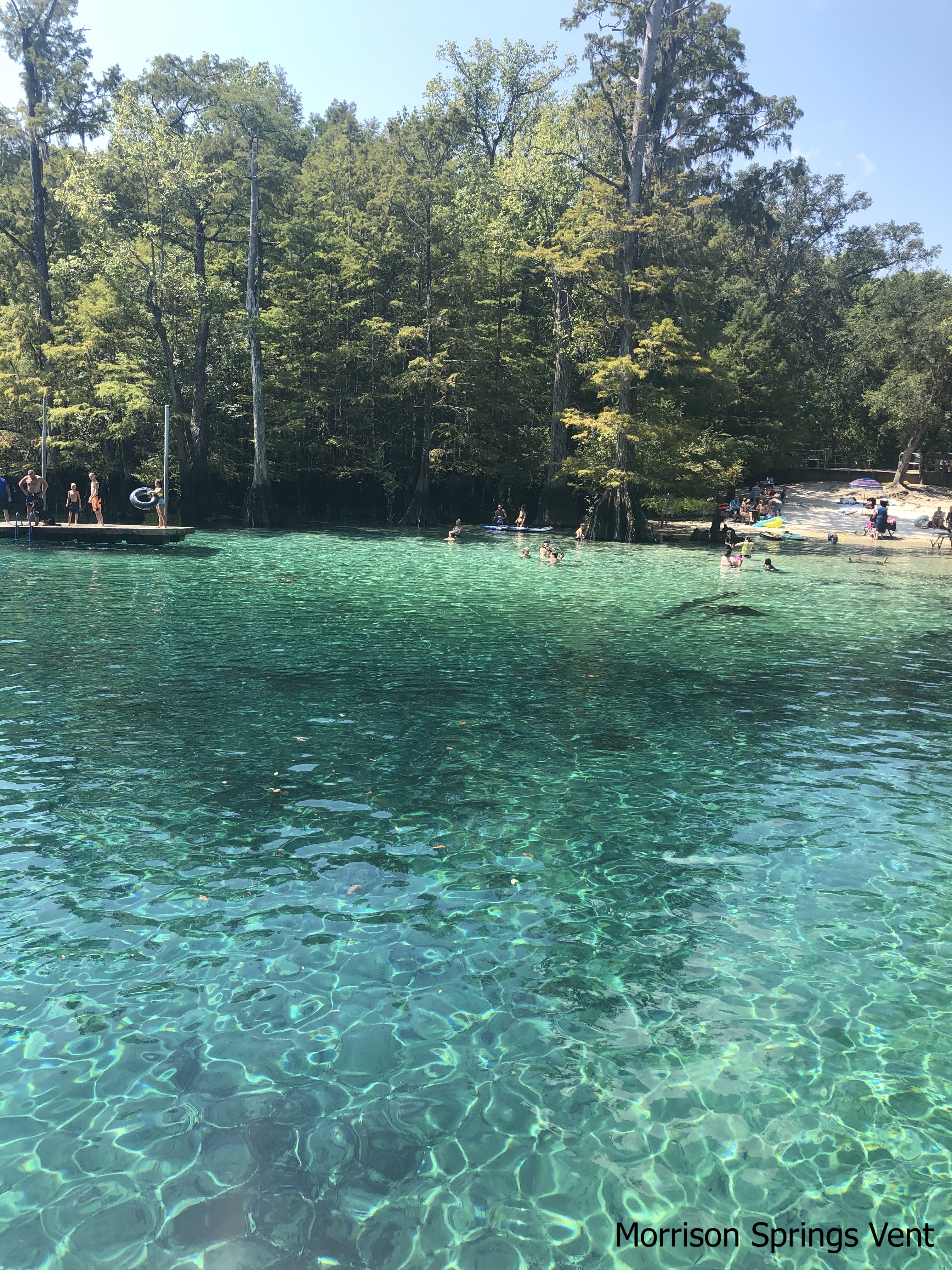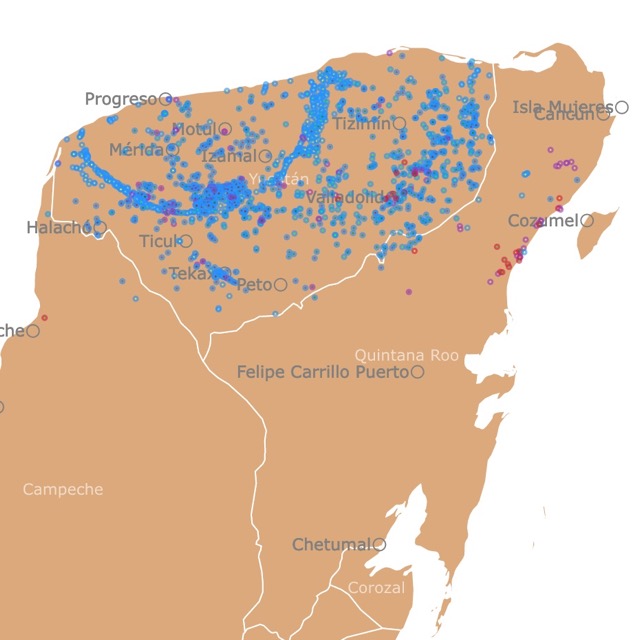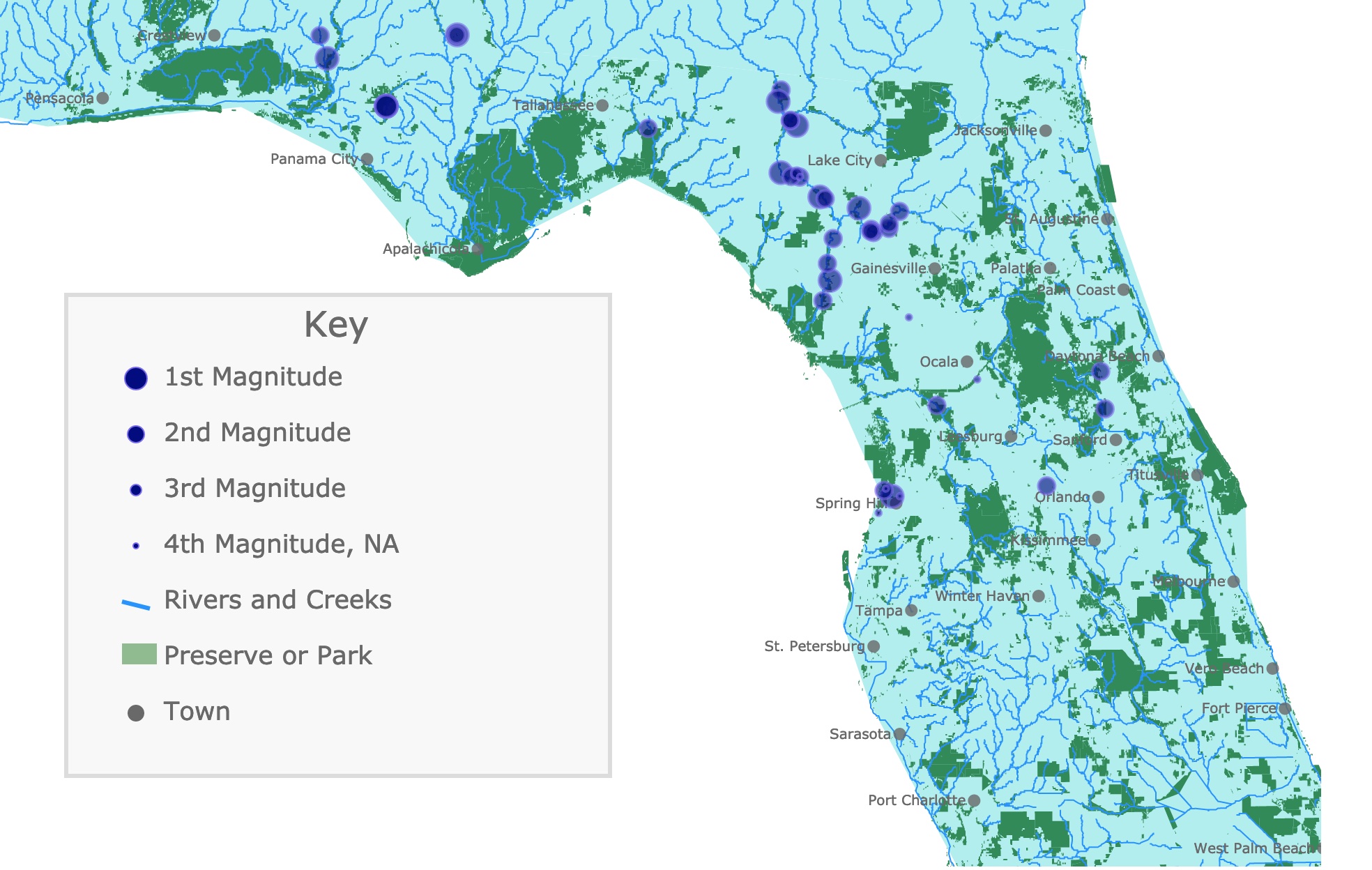Cave Diving Map of Florida
This interactive map shows known Caves to Dive in Florida. The size of the circle shows the magnitude of the Spring. Dark green represents state parks and preserves. To get more information on each Spring, Stream, Sink, or Park hover over the feature. To get a closer look, zoom over.
Florida Underwater Cave Map
This map highlights the location and surroundings of underwater caves in Florida. These are mainly freshwater caves.
There is no particular order to the caves described, except the river outflow. The ones highlighted here, were suggested by divers on social media (Reddit and Facebook).
Most of the caverns are springs but there are also sinkholes.
"For those who possess the highly specialized training, equipment and skills required, it can be a very rewarding experience. It can also be deceptively easy and extremely dangerous — especially for those who lack the prerequisite knowledge, equipment and skills." National Speleological Society Cave Diving Section. The NSS Cave Diving Section is the largest cave diving section in the United States.
If you think you want to learn from a Florida cave diver, Amazon has The Education of a Cave Diver. This book has decades of diving experience from Guy Bryant. Guy recounts his adventures - good, bad, and dangerous - and about the mentorship of friends and more experienced cave divers he met along his journey.
SUWANNEE RIVER
Peacock Springs
The spring has 3 vents in a pool that measures 150ft long and 90ft wide. The average depth is 5ft with depths of 40ft. (Florida Geological Survey Bulletin 66).
Over 30,000ft of limestone tunnels and rooms have been recorded so far.
Currently there are 3 entrances to the cave system.
The caves have a series of tunnels and chambers, including karst windows and rooms with large rocks that have broken off the ceiling.
The park offers a long and strict list of guidelines to ensure the safety of all divers. Peacock Springs.
Cow Spring
Northwest of Gainesville, this is technically not a Spring but a Sinkhole. It just provides divers access to and underground river.
The pool has an oval shaped pool of about 66ft long and 18ft wide. The vent is 25ft deep.
From the main cavern there are 2 tunnels, both about 600ft.
This is an great cavern to dive with the numerous openings and light effects. Source: Divebuddy.com
For a fun and educational book on cave diving Amazon has Essentials of Cave Diving: Fourth Edition". This guide book is a contemporary cave diving instructional. It contains practical, 21st century underwater knowledge, including sidemount techniques and the latest in rebreather technology.
Little River Springs
Is located Northwest of Gainesville. The pool measures 108ft (32.9m) by 93ft (28m). The depth over the vent is 11.0ft (3.3m) (Florida Geological Survey Bulletin 66).
Most of the cave average around 30m 100ft depth Cave Diving.

Manatee Springs
Manatee Springs is a first Magnitude spring located in Manatee Springs State Park. About 48mi West of Gainesville.
The spring is about 26ft (8m) deep at its deepest spot.
There are about 5 miles (8,000m) of mapped tunnels and caves.
If you are not ready to dive in this spring you can always snorkel, swim, fish or kayak in the park. It also offers trails and broadwalks to enjoy the surroundings Earth Magazine.
SANTA FE RIVER
Devil's Ear
The Devil's Cave system is a group of 3 cavern entrances Devil's Ear, Devi's Eye, and Little.
They are located Northwest of Gainesville and are part of the Ginnie Springs group.
It is one of the most popular cave dives in the world.
The cave system is an extensive network of tunnels developed in the Ocala Limestone. The passage diameters range from two to twenty meters. This is a mazetype cave. The side passages in the cave system typically go in two general directions from the main tunnel, however most eventually intersect the large, main conduit.
The cave passages trend at a depth of between 0 and 35 meters below land surface.
The cave system is formed entirely within the Ocala Limestone. The tunnels also have clay, sand, and silt transported form the overlying sediments in the surrounding area.
The Devil’s Ear cave system has crystal clear waters but is greatly reduced during during periods of high river flow. Passages on the south side of the cave system may have dark, tea-colored water GROUNDWATER AND SURFACE WATER INTERACTIONS IN THE WESTERN SANTA FE RIVER BASIN NEAR HIGH SPRINGS, FLORIDA.
Only certified cavern or cave divers may enter the water at the Devil Spring system while carrying dive lights. The furthest point of the cave is almost a mile from the entrance.
The caves have a series of galleries and branches that allow for different pathways and tunnel exploration Cave Diving.
UNKNOWN OUTFLOW
Devil's Den
Southwest of Gainesville, it operates as a private scuba diving facility.
This spring was formed as a karst window. This occurs when a carbonate bedrock collapses into a sinkhole.
The cavern has ancient rock formations with stalactites, and fossil beds dating back 33 million years. Remains found in this cavern include bones of mastodons, giant sloths, spectacled bears and saber tooth cats. Some of these remains are at the University of Florida in Gainesville.
The cavern has an inverted mushroom shape below the surface. Maximum depth is 54ft (16.45m).
The den has lodging, camping and recreational facilities for visitors. Source: Devilsden.com.
Eagle's Nest
Eagle's Nest is a sinkhole located in Chassahowitzka Wildlife Management Area, North of Tampa.
One of the reasons this cave is sought by divers is that through the entrance tube there is what divers call a "Ball Room" 70m deep and 100m in diameter, filled with crystal clear water.
Regardless of the depth, sunlight trickles through the tubes on the ceiling, making a wonderful light display.
Because of the depth of >100m and nearly 2km of water passages it is necessary to have stage bottles, scooters and a great deal of training Caves and Karst of West-Central Florida.
Diepolder
Diepolder II and Diepolder III are located on the Sand Hill Ranch Scout Reservation, Hernando County, close to Eagle's Nest.
Diepolder II has the record of the deepest cave dive of 130m in Continental United States.
Nearby Diepolder III has one of the largest explored rooms in the region with a diameter of 130m at 100m depths.
Unexplored areas of Eagle's Nest and Diepolder require advances in diving technology
WITHLACOOCHEE RIVER

Madison Blue
Madison Blue is Northwest of Lake City. The spring discharges water at a rage of 2.0 to 3.8 m3/s. It is an extensive network to the Withlacoochee River.
Cave divers have mapped about 8km of passages connected to this spring.
ICHETUCKNEE RIVER
Blue Hole or Jug Spring
Located Northwest of Gainesville in Ichetucknee Springs State Park.
The pool is 87ft x 117ft wide from (Florida Geological Survey Bulletin 66). The depth at the vent is 37ft. On average, 67 million gallons of water per day flow from Blue Hole.
The cave system has 600ft of measured passages, some large and some narrow. The visibility is crystal clear.
SANDY CREEK
Vortex Spring
This is a privately owned Swimming hole, Northwest of Panama City, with approximately 32 million gallons of crystal-clear water per day.
It is a well-known swimming area for tourists, but its main attraction is one of the largest diving facility in the State of Florida.
The facilities offer recreational areas for the whole family, lodging, and trails.
Vortex Spring, is a diving Mecca for experienced and newbie divers. There is a 500 acre resort with nature trails, campgrounds, lodge, and slides. Vortex Spring.
The pool has a near circular shape with 225 ft in diameter. The depth near the pool center is 48ft.
The underwater cavern starts 58ft below the water surface. Experienced divers are allowed to 115ft. It is technically possible to dive to 310ft but the passage is blocked by a locked gate. Expeditions have mapped the cave to 1,642 feet, but it probably goes deeper. Atlas Obscura.
Remarks about Cave Diving in Florida
This is just a short selection of caves to dive in Florida. Which one to choose, depends on your certifications and experience.
Some have great geology and others fossils that have been collected and displayed. Others have arrays of lights and shadows worth the dive.
Most of them have incredible crystal clear waters that allow divers high visibility, and constant temperature that average 70F throughout the year.
Cave Diving Risks
A total of 161 cave divers have died between 1985 and 2015. Of these, 67 were trained cave divers and 87 were untrained. The number of fatalities has steadily fallen over the last three decades but the proportion of trained divers keeps increasing.
The most common cause of death for cave divers is asphyxia. This is after they run out of breathing gas, usually after getting lost due to loss of visibility by suspended silt Thirty years of American cave diving Fatalities.
This list will also improve with your suggestions. To receive updates on this and more nature maps join my email list!!!!!!!
Made by Luz K. Molina with D3.js.










